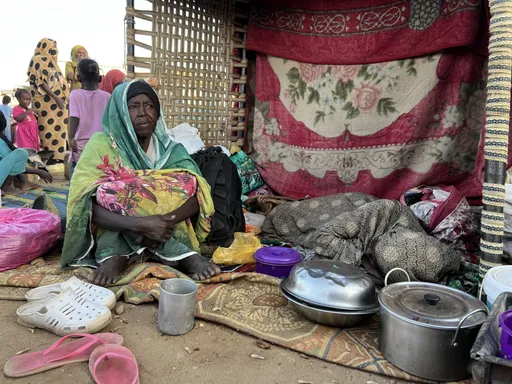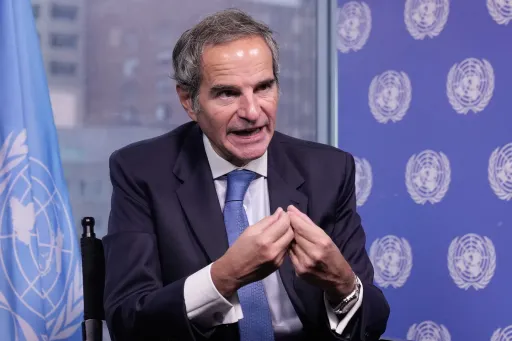By Gift Dumedah
At the ongoing 28th Conference of the Parties (COP28) annual United Nations (UN) climate meeting in Dubai, the Parties agreed to operationalise the ‘Loss and Damage’ fund to assist developing countries experiencing adverse effects of climate change.
This announcement has been hailed as a historic agreement, particularly given the lack of clarity on what ‘loss and damage’ means, and the resistance to its adoption, especially by most developed countries.
‘Loss and Damage’ have been widely recognised as destructive consequences, either economic or non-economic, of climate change that occur in the presence or absence of mitigation and adaptation measures.
Accordingly, the Loss and Damage Fund is expected to provide financial assistance to address the negative consequences of climate change, such as loss of land, infrastructure, and livelihoods, and to compensate less developed states for the effects of climate change.
Undoubtedly, big emitters of greenhouse gases and developed countries should accept moral responsibility to contribute to the fund. It is encouraging that there is some movement in this direction, which others need to follow.
For coastal communities in Africa that have been experiencing diverse negative impacts arising from unavoidable risks of climate change, such as rising sea levels and more intense and frequent extreme weather events, what is the implication of this Loss and Damage Fund?
Universally, it is recognised that Africa’s carbon footprint of about 4% is tiny in comparison to other continents’ emissions, yet it experiences some of the most damaging impacts of climate change.
Among the damaging consequences of climate change, climate displacement ranks high in coastal Africa often leading to internal and cross-border migration.
Multi-faceted approaches
According to some estimates, 38.5 million people could be compelled to move within the Basin countries due to climate factors by 2050.
The enormity of climate displacement means that such a fund will be critical to provide relief to the growing number of Africans displaced by climate change, including those in coastal areas.
The fund is expected to provide fast, accessible, non-debt finance to the growing number of Africans displaced by the escalating climate change, according to the COP28 documents.
Loss and damage caused by climate change is a serious problem, yet it is only one piece of the diverse challenges facing Africa’s coastal communities.
It has been widely acknowledged that comprehensive and multi-faceted approaches that encompass nature-based solutions, adaptation and mitigation, resilience, equity, sustainability, and collaboration are needed to effectively address climate displacement in Africa.
This is partly driven by the complex interplay between climate change, communities, environment, and the limited adaptive capacity in Africa, that demands a focus on long-lasting sustainable solutions to address the challenges posed by climate displacement.
Coastal Africa hosts a significant proportion of the continent’s population, is a significant socio-economic area forming a critical backbone for numerous national economies, and has sensitive environment, ecosystems, and resources including coral reefs, wetlands, lagoons, estuaries, mangroves, and many more.
Given its pivotal relevance, the protection and restoration of coastal Africa must go beyond the Loss and Damage Fund.
Sustainable options
Fundamentally, there are recurrent and cross-cutting challenges facing coastal Africa, some of which relate to rising sea levels, flooding, erosion, pollution (air, water and land), saltwater intrusion, and human activities such as sand extraction.
The highly recommended comprehensive and multi-faceted approaches need ecosystem-specific developments and ecosystem-wide actions, some of which extend beyond national boundaries, with emphasis on key actions.
Climate action in coastal Africa needs to be driven by nature-based solutions with emphasis on employing natural features and processes to sustainably and adaptively restore coastal ecosystems.
This cannot be achieved without adequate investment in climate adaptation, mitigation, and resilience – which is where the use of the Loss and Damage Fund should be prioritised.
Also, equitable and sustainable options are needed to ensure that all people and communities are protected economically, socially, and culturally while restoring damaged ecosystems.
This must be underpinned by active and genuine collaborations and partnerships, ensuring that local communities own these initiatives and drive them.
Given the evolving nature of climate change, comprehensive early warning systems associated with social and economic support systems should be integrated to safeguard people's well-being.
The author, Gift Dumedah, is a Ghanaian academic whose research focuses on water, climate, and earth systems.
Disclaimer: The views expressed by the author do not necessarily reflect the opinions, viewpoints and editorial policies of TRT Afrika.
➤Click here to follow our WhatsApp channel for more stories.




















